4.06.2022
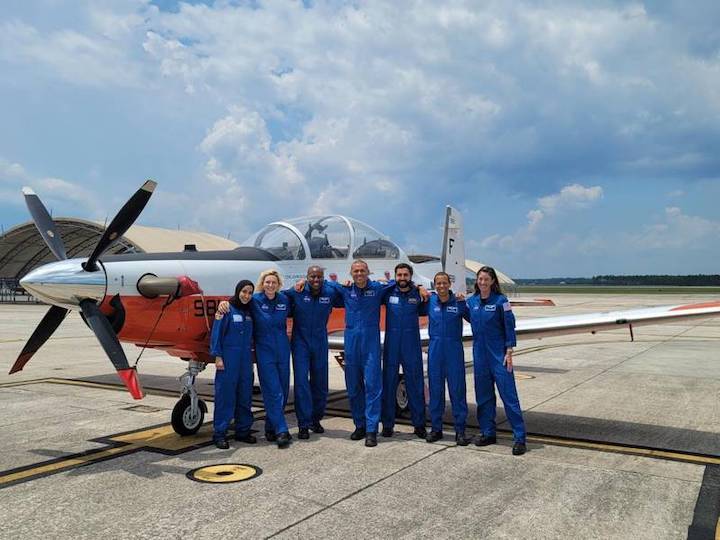
Nora Al Matrooshi (left) UAE's first female astronaut, and Mohammed Al Mulla (third to right) completed training on the T-6A aircrafts. Now, they begin training on the T-38 Talon, supersonic jets that help prepare astronauts for spaceflight. Here, they are pictured with their Nasa colleagues, who are also in training. Photo: Anil Menon Instagram
Nora Al Matrooshi and Mohammad Al Mulla will sharpen skills in powerful jets breaking sound barrier
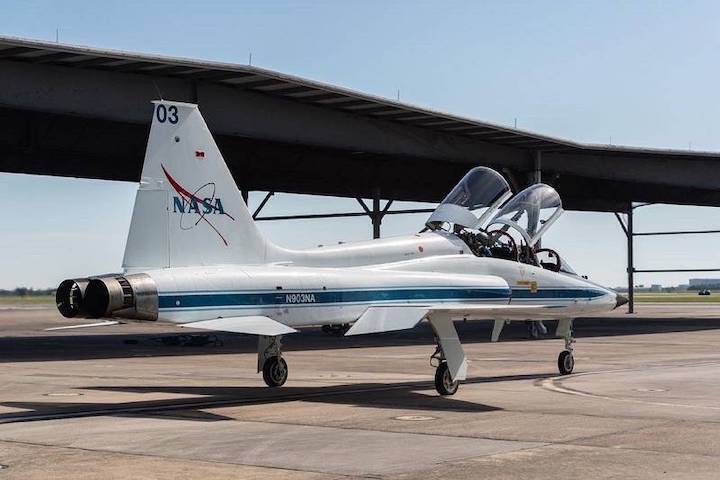
They will begin training in the T-38 Talon jets, which have been used by the US space agency since the 1960s to train its astronauts, achieving supersonic speed and high altitude that create gravitational forces trainees must experience.
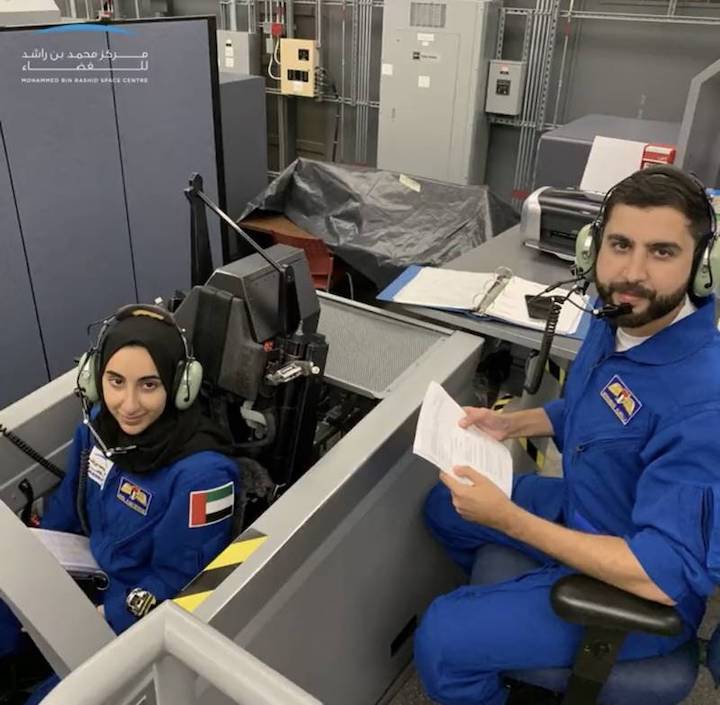
Ms Al Matrooshi and Mr Al Mulla learn how to fly through a simulator course in Florida. Photo: MBRSC
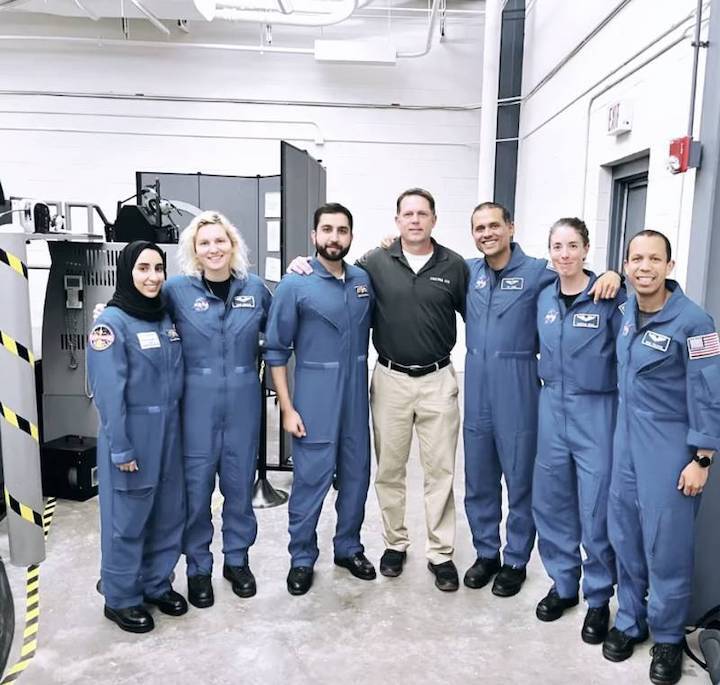
Ms Al Matrooshi (left) and Mr Al Mulla (second to left) at a simulation flying ground school with their Nasa colleagues. Photo: Anil Menon Instagram
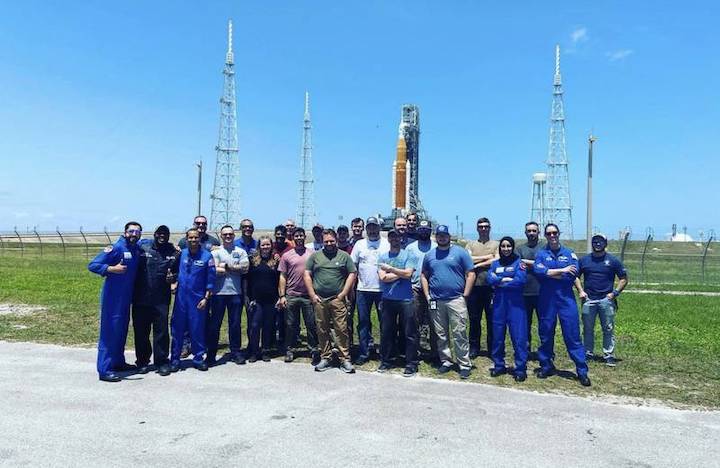
UAE's newest astronauts visited the Florida's Kennedy Space Centre to see the Space Launch System, world's most powerful rocket that will launch astronauts to the Moon one day, roll out onto the launch pad. Photo: Mr Al Mulla Instagram
The UAE's newest astronauts will take a major step closer to their goal of travelling in space by taking to the skies in supersonic jets which fly faster than the speed of sound.
Nora Al Matrooshi, the UAE’s first female astronaut, and her colleague Mohammad Al Mulla embarked on an intensive two-year training programme at Nasa’s Johnson Space Centre in Houston, Texas, in January.
They joined the UAE's growing space corps — already featuring Hazza Al Mansouri, the first Emirati in space, and Sultan Al Neyadi, reserve astronaut, on the milestone journey to the International Space Station — in April 2021.
Ms Al Matrooshi, 29, a mechanical engineer, and Mr Al Mulla, 34, a Dubai Police helicopter pilot, will qualify for Nasa-led missions to the ISS and beyond once they graduate.
They are now ready to train on T-38 Talons, which have been used by the US space agency since the 1960s.
The high-powered crafts can hit supersonic speed and soar to high altitudes that create the gravitational forces that trainees must experience.
These help astronauts become familiar with 'high Gs' experienced during spaceflight and make quick decisions while piloting a spacecraft.
Both of the astronauts have already piloted T-6A aircraft, which is a prerequisite before they can start flying the T-38s.
The T-6A is a single-engine aircraft and can fly up to speeds of 514kph. It is commonly used to train astronauts in basic flying skills.
“Astronauts Mohammad Al Mulla and Nora Al Matrooshi flew aboard the T-6 aircraft as part of their training at the Nasa Astronaut Candidate Class,” the Mohammed bin Rashid Space Centre tweeted.
“The training covered a variety of manoeuvres. These trainings were performed after Mohammad and Nora completed ground school and simulator flying courses.”
They spent a few weeks at Florida’s Naval Air Station Pensacola, where they completed simulation and practical training and were taught by US Navy officers.
Before this, they successfully completed survival challenges, where they lived in a remote forest for days, and learnt how to survive from the resources available.
Astronaut flying high
Mr Al Mulla, who has 15 years of helicopter flying experience, said he was overjoyed after passing the T-6A training.
“It was a really good challenge,” he said.
“I felt like after accomplishing water survival, I’m more comfortable flying, even offshore.
I felt really good after passing. I’m really glad to be here and learning from the Navy.”
Anil Menon, a Nasa astronaut in training, said the simulation sessions helped with the practical training.
“Yes, we learnt how to fly a T-6 and navigate via instruments, yet more importantly we learnt a system for learning, practice and high performance that translates to other activities,” he said.
Completing the training on the T-38 Talon jets would be a major milestone for the astronauts.
Flying the supersonic jet involves travelling at speeds of Mach 1.6 and experiencing more than seven Gs – seven times the force of gravity – enough to make an average person lose consciousness.
In addition, T-38 Talon jets can climb from sea level to almost 30,000 feet within one minute.
Later stages of their training at Nasa involves learning more about the systems of the space station, how to operate the station’s robotic arm and how to perform spacewalks, which is expected to be another daunting part of the programme.
Astronauts are required to wear 130kg spacesuits, while performing tasks beneath the world’s largest indoor pool.
Located at the Neutral Buoyancy Lab, near the Johnson Space Centre, the pool is 12 metres deep and contains 2.4 million litres of water.
It helps simulate microgravity and allows astronauts to work on a replica of the space station placed underwater.
UAE's first astronauts set sights on further missions
Maj Al Mansouri and Dr Al Neyadi graduated from the training programme last month.
Both are preparing for a six-month mission to the ISS. The Nasa-SpaceX Crew-6 mission will launch next spring from Florida’s Kennedy Space Centre.
Only of them will fly to space, while the other will act as a backup astronaut.
It is likely that Dr Al Neyadi, a former IT professional, will be the next Emirati to go to the ISS.
Quelle: National

